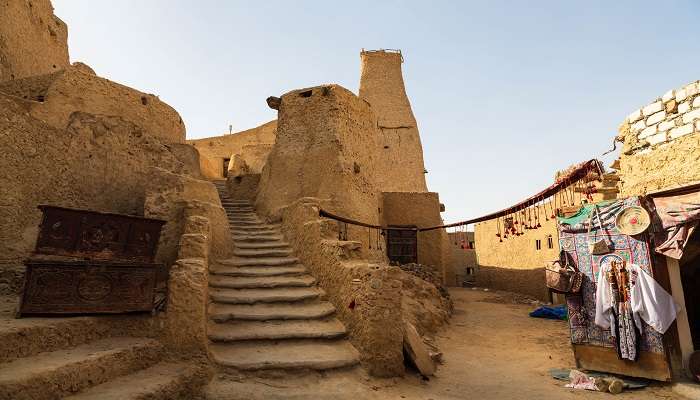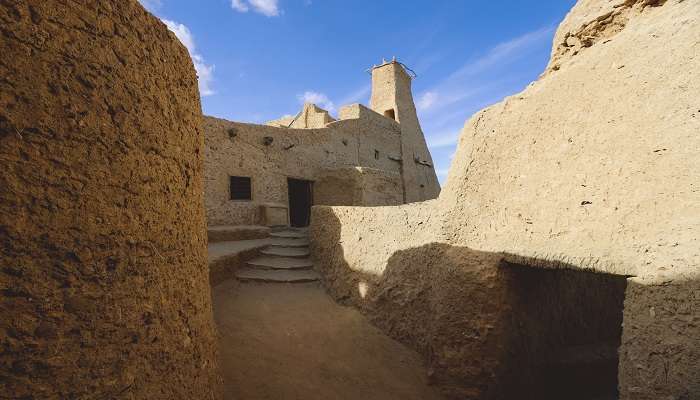Visiting Te Shali Fortress In Siwa A True Hidden Gem

Towering over the rugged Dagestan mountains, the ancient Shali Fortress has guarded this region since the 9th century. Its massive stone walls and formidable towers project an air of impregnability. This citadel was built with incredible skill and provided a secure haven for residents during turbulent times. Stepping through the fortress gates transports visitors centuries into the past. Winding alleys reveal remnants of the autonomous community that once thrived within – dwellings, workspaces, and granaries. Today, the Shali Fortress stands firm as an enduring symbol of resilience, allowing us to glimpse the lives of those who determinedly forged an existence in this mountain stronghold.
About Shali Fortress
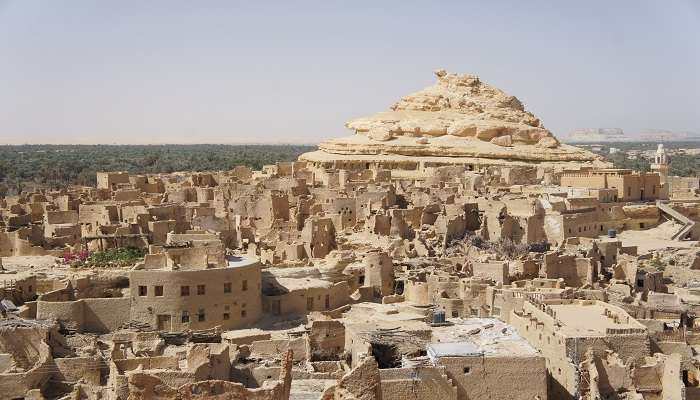
Shali Fortress is a landmark nestled in the heart of Siwa town celebrated for its unique architecture and rich cultural significance. Erected in the century by the Siwan people this ancient stronghold was strategically crafted to shield the community from dangers. Constructed from kerchief—a blend of salt rock and mud brick—the fortress boasts insulation against the harsh desert climate maintaining a cool interior during scorching days and warmth, on chilly nights.
Visitors exploring the stronghold of Shali, in Siwa can meander through its pathways. Climb to high points that provide breathtaking views of the lush palm groves and surrounding oasis. Despite its build, the fortress has slowly decayed over time adding a touch of charm that enhances its appeal. Today the remains of Shali Fortress stand as a tribute to the resourcefulness and endurance of the Siwan people attracting travellers keen to delve into its history and marvel, at its brilliance.
Must Read: Saint Catherine Monastery
Shali Fortress History
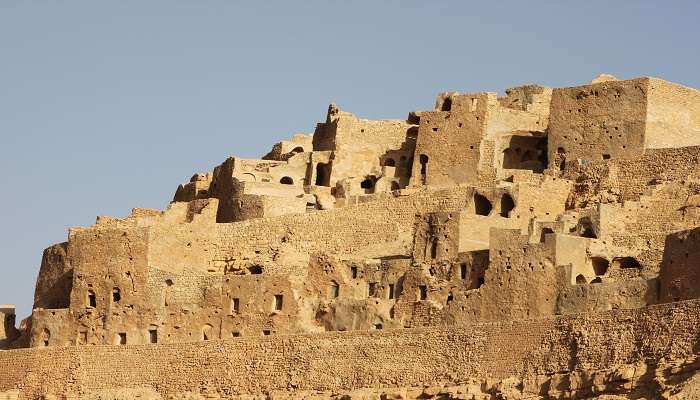
Shali Fortress history, or “Shaly,” meaning “city” in the Siwa language, has a rich and storied past dating back to 600 H (1203 A.D.). It was mentioned by the geographer Al-Idreesy in 1154 A.D. in his book “Nozhat al-Moshtaq,” and later by Ibn Doqmaq in “al-Intesaar” around 1388-1391, referred to as “Santareyya.” Forty survivors of the oasis population constructed the fortress as a protective shelter against the Bedouins, Barbarians, and Western invaders.
In 1826, following Mohammed Ali’s conquest, security improvements led to the abandonment of the Shali Fortress. A devastating heavy rain in the same year caused significant damage to the Kershef-built houses, accelerating the departure to a new village outside the ancient one. The historical significance of the Shali Fortress is further underscored by the discovery of Pharaonic and Roman tombs in the nearby plateau by Ahmed Fakhry in 1937, highlighting the area’s long-standing importance and heritage.
Shali Fortress: Architecture And Design
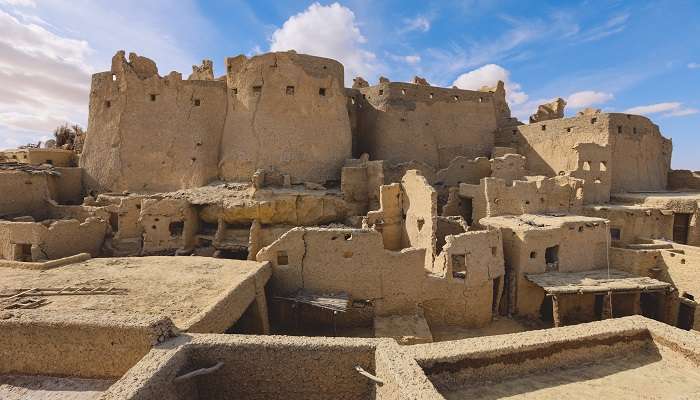
The architecture of the Shali Fortress is distinctive in its design. Unlike stone fortresses, Shali was constructed using Karshif, a building method that incorporates salt blocks, mudbrick and rock. This special material gave it a look and provided natural insulation against the harsh desert climate.
Situated strategically on the ground with a maze layout the fortress consisted of densely packed buildings that originally stood at four or five stories high along with narrow passageways designed as a defensive measure against potential attackers. Despite being damaged over time and by calamities Shali Fortress remains a testament to innovative design. Ongoing restoration projects are, in place to safeguard its importance.
Suggested Read: Best Honeymoon Places In Egypt
Best Places To Visit Nearby Shali Fortress
The fortress of Shali in Siwa Egypt is a remarkable historical site surrounded by several fascinating attractions. Below are some of the best places to visit nearby:
1. Fatnas Island
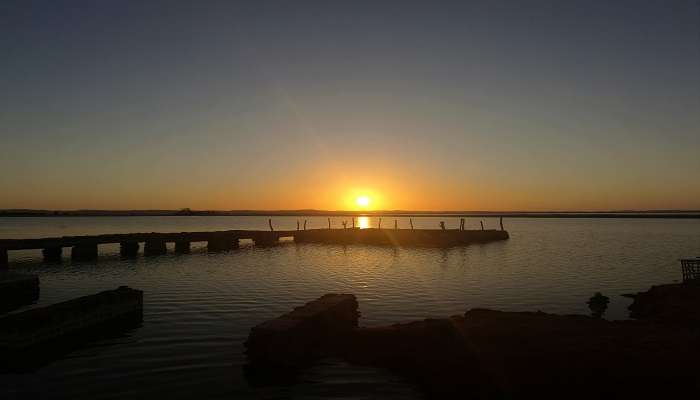
Fatnas Island, also known as Fantasy Island, is a picturesque spot located in the Siwa Oasis of Egypt. This fairly secluded pool sits on a small island within the salty Birket Siwa, accessible via a narrow causeway. Surrounded by lush palm trees and greenery, the pool’s idyllic setting makes it a popular spot for swimming and sunbathing.
2. Siwa Salt Lakes
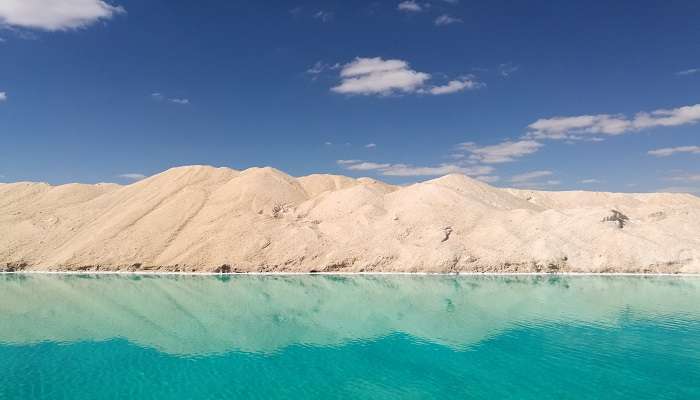
The Siwa Salt Lakes, located in the Siwa Oasis in Egypt, are a natural wonder that captivates visitors with their otherworldly beauty. These shimmering salt pans stretch across the desert landscape, creating a surreal and serene environment. The lakes are rich in minerals and have therapeutic properties, making them a popular destination for relaxation and wellness. As you explore this ancient oasis, you’ll also encounter historical sites, including the Temple of the Oracle of Amun and the ruins of the ancient city of Shali.
Suggested Read: Best Places To Visit In Egypt With Family
3. Oracle Temple
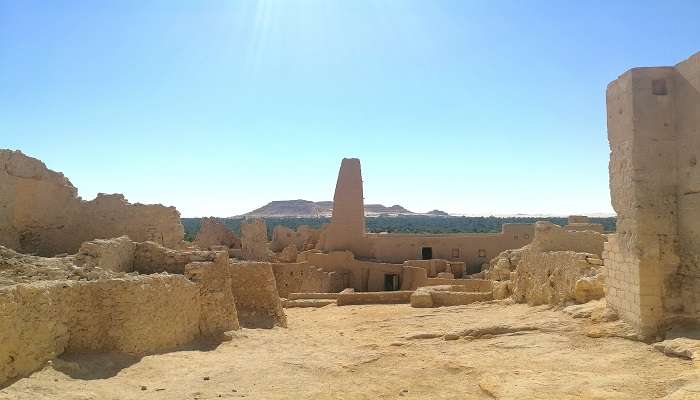
The Oracle of Delphi, located in ancient Delphi, Greece, was a renowned religious sanctuary dedicated to the Greek god Apollo. Developed in the 8th century B.C., it housed the priestess Pythia, who was famed throughout the ancient world for divining the future. Before major undertakings, people consulted her prophetic words. Delphi was also home to the Pythian Games, the second most important games in Greece after the Olympics. The central feature was the Temple of Apollo, where Pythia delivered her prophecies.
How To Reach
The Shali Fortress is in the heart of Siwa Oasis, a remote village approximately 185 miles (300 kilometres) south of the Mediterranean Sea. You can reach the fort via the following ways:
By Road
Siwa Oasis is accessible by road. From major cities like Cairo or Alexandria, you can take a bus or hire a private car. The journey takes several hours, but the scenic desert landscapes make it worthwhile.
By Air
The nearest airport is Marsa Matruh Airport, which is approximately 200 kilometres away from Siwa. You can arrange a taxi or private transfer to Siwa from there.
By Desert Safari
For a unique experience, consider a desert safari. You can travel by 4WD vehicle through the desert, enjoying the rugged terrain and stopping at various points of interest along the way.
Suggested Read: Hanging Church In Egypt
The Best Time To Visit 
The best time to visit the Shali Fortress in Siwa Oasis is during the winter months, from November to February. The weather is mild and pleasant, with temperatures ranging between 18°C to 25°C. However, nights can become chilly, particularly in December and January.
Further Read: Com Ombo Temple
The Shali Fortress, a mud-brick marvel in Siwa’s heart, transports visitors through time. Its winding alleys and ancient structures offer a captivating glimpse into the rich cultural tapestry woven by the resilient Siwa people. This fortress is a must-visit for history buffs, architecture enthusiasts, or those seeking authentic experiences. Unlock the timeless allure of the Shali Fortress by booking your trip to Egypt today. Immerse yourself in the desert’s embrace and create unforgettable memories amidst this ancient citadel’s captivating charm.
For our editorial codes of conduct and copyright disclaimer, please click here.
Cover Image Credit: Khaled E. Ahmed for Wikimedia Commons
Frequently Asked Questions About Shali Fortress
When was the Shali Fortress built?
The Shali Fortress, also known as Shali Ghadi, was constructed around the 13th century. It has stood as a symbol of Siwan culture for centuries.
What materials were used in the Shali fortress?
The fortress was built entirely from a unique material called kershef. Kershef is a mix of salt rock, mud, and straw. This mixture created a durable building material that could withstand the harsh desert environment.
What was the purpose of the Shali Fortress?
The primary purpose of the Shali Fortress was to protect the oasis’s inhabitants. It served as a stronghold against invaders and provided shelter during sandstorms. Over time, it became a hub of social and economic activity for the Siwan community.
How has the Shali Fortress been preserved?
The fortress suffered damage from heavy rains, earthquakes, and neglect. However, recent restoration efforts have been made to restore it to its former glory. Traditional building techniques and materials were used, preserving Siwan cultural heritage and providing employment opportunities for the local community.
Can visitors explore inside the Shali Fortress?
Yes, The ruins of the Shali Fortress offer a hauntingly beautiful glimpse into the past. Visitors can explore the labyrinthine passageways, climb to the highest points for panoramic views of the oasis, and marvel at the remnants of this once-thriving community.
People Also Read:
Kittur Fort Red Fort Orchha Fort

Unveil the hidden treasures of the globe and turn every travel dream into reality. As a Content Writer, I am passionate enough to craft stories from ancient wonders to modern marvels. My words paint the picture-perfect itinerary for unforgettable experiences. Let my words be your trusted guide to immerse in the diverse culture and discover the beauty of the unknown.
